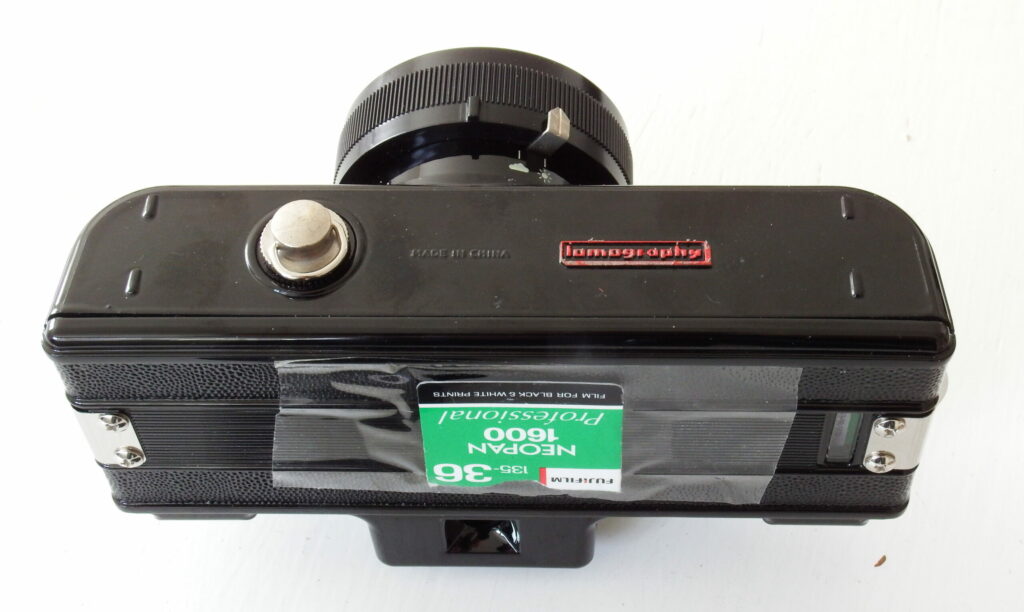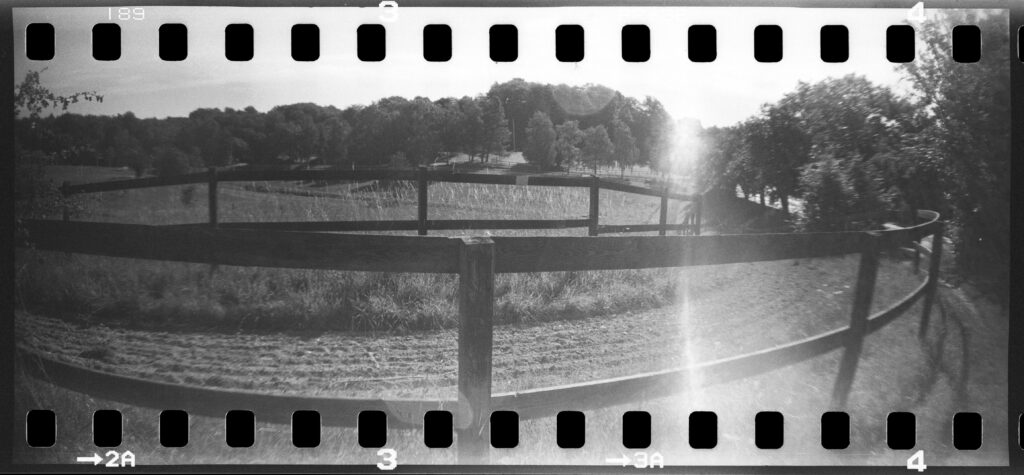One of the things I often find is that a camera, that I initially have dismissed as garbage, surprise me and make me find new creative ways in photography. I have been through this with the Holga 120 cameras, that I disliked in the beginning, so much that i simply scrabbed a Holga that I received as part of a load of other cameras. My dislike was close to disgust, but some years later after having been shooting with a lot of different cameras my view had changed, and I decided to try out a Holga. Suddenly, my attitudes were changed as I explored the land of crabby cameras but at the same time rediscovered photography by inspiring a new wave of creativity.
Could the same happen with another toy like camera, the extremely plasticky and basic Sprocket Rocket? I had seen a lot of adds and articles on this camera, that seemed to inspire its users to create something quite unique. Anyway, I got to it in a kind of detour as I was shooting images for my book Panoramic Images. Having shot images on a load of obvious contender cameras I started searching the less obvious, and the Sprocket Rocket was one of these. Surprised again, I found this piece of seemingly garbage to be a very, very inspirational camera that made me go out even more to shoot.


Fujica GL690 Kodak GPX 
Fujica GL690 Kodak GPX 
Fujica GL690 Kodak GPX
On the outside this camera is a piece of cheap plastic, contains a plastic lens that creates quite a bit of vignetting, and distorts the outer parts of its 72mm by 33mm image area. What, 33mm? You might say, and that’s right it exposes an image almost to the edge of the 35mm film, only leaving 1mm on each side unexposed, and that is the reason for its name, Sprocket Rocket, sprockets being the film advance holes on both sides of the normal image area. If you know the extremely nice – and expensive – Hasselblad Xpan that creates an image of 64x24mm, that is just a baby panoramic camera compared to the Sprocket Rocket. Sure, I know the image is much sharper and shows very little vignetting on the Hasselblad, and that camera also seem to inspire its shooters. But, as I’we never wanted to invest the insane amount of money required for the Xpan, I found it much easier to finance the Sprocket Rocket. I got my specimen for only around 60€ compared to the minimum 2.000€ required for the Xpan.

Apart from the the huge image area, plasticky lens and body, what does this camera provide you with? On the lens you have two selectors each with two settings: The aperture selector with a clouded (f11 some sources say f8) and a sunny setting (f16), the shutter speed selector with a 1/100 setting and a bulb mode. Finally on the lens you also have the shutter release button. Unfortunately, though having a B setting there is no place to connect a cable release. The lens itself is a 30mm with an impressive 106° field of view. The focus has two settings, 0.6-1m and 1m-infinity.

On top of the camera you have a viewfinder that, although no precision instrument, gives you a good idea of what is in the frame and what is not. You also find an exposure counter, and an indicator telling you when you have wound the film far enough for no overlaps to appear. But, and at that is part of the creative freedom of this camera, you are able to expose your frame as many times as you want, or expose at any time during the forward winding of the film in order to create full or partial overlaps of images. Nice detail that really calls for inventive thinking and exploratory photography. The viewfinder house is topped by a hot shoe, not that I have ever used it, but some would find this nice as you can attach almost any flash – and like the Holga GCFN maybe use coloured flash.


The bottom of this camera holds a tripod socket that into which a holder for a strap i screwed. Otherwise there is nothing on the bottom, not even a return wind release, as that is not necessary. Should you wish to rewind the film, you can do that at any time, and even pick up shooting again whereever on the film you would want. Once again another creativity feature.

The whole back of the camera comes of when you need to load and remove film. I found the locking mechanism to be a bit flimsy, but having shot many film and not braking it, it seems to be sturdy enough. Furthermore, and separating it from the Holgas, the camera doesn’t seem to be prone to light leaks, at least I have never had any on my specimen.
Lets have a look at what you can create with this camera, many more examples are in my book on Panoramic Images.



These were some of the more ordinary images, where no special technique was used. Just shots taken as the subject looked interesting. Now on to some of the more creative ones, where I have used some of the features of the camera. In the bus shot, I used Bulb mode and the bright day setting on a very dark rainy day. I panned following the bus while I held down the shutter for almost a second. Furthermore, the shot was done through my open window blinds. The shot was done on a film named Photo World, expired about a decade before, and afterwards converted to black and white.

In the double exposed image, which is actually a triple exposure, I shot one image close to some of the statues surrounding an old castle. The next exposures are of the total scene with the castle and the statues around it. It was made on the same Photo World film that, due to the expired state and maybe bad conservation in too hot conditions, gave some odd colours. Actually, I like the look of the film in that state, and I’m unhappy I don’t have more of it.

Conclusion:
Was this camera worth the money, the film, and time spent on it? Definitely, knowing how it performed I would any time buy a new one, if the one I keep broke irreparably at any point. Of course there are weak points and functionality that I miss, but few cameras have it all, and this one ticks most of the boxes for me. Will it do the same for you is hard to tell, but now that I have described the camera, my usage of it, and shown some om my results, I hope you will know better.
Strengths:
- Very panoramic format
- Exposing almost to the edge of film including the sprockets
- Ability to do multiple exposures
- Flexible film forward function – and even reverse during shooting
Weaknesses:
- Only two, and worse, not very widely spaced apertures of 11 and 16
- A little stiff forwarding of film
- Image quality is only good in the center of the image
- What I see as the most serious omittance is the lack of a cable release connection
All in all this camera comes very recommended. It is a lot of fun to shoot, it spurs your creativity, and the results are often very nice and some even belong amongst my all time favorite images. The camera itself is one of my all time favorites, and what a change from at first regarding this as some sort of unnecessary toy.